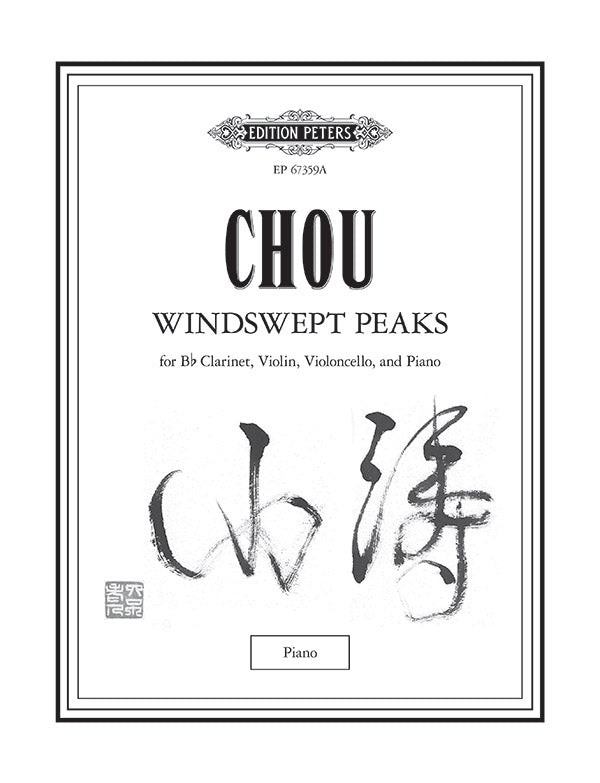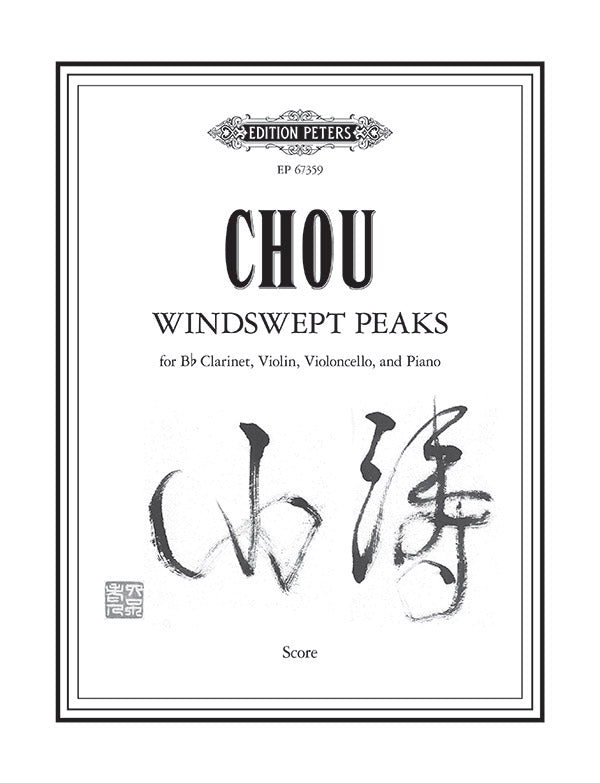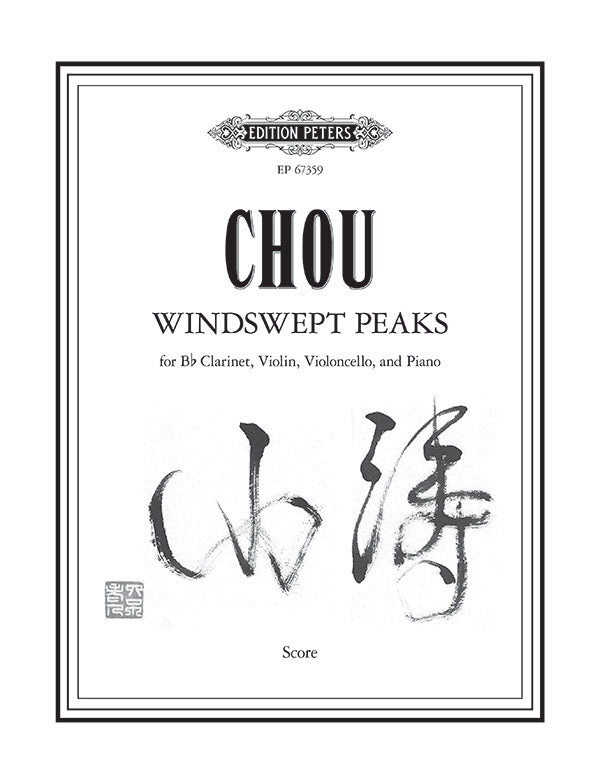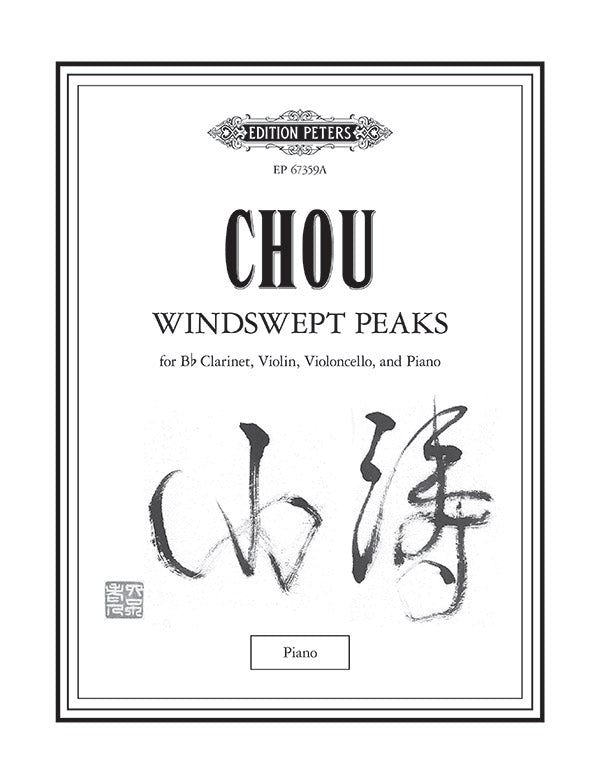Wen-chung Chou
Chou: Windswept Peaks
- Composer: Wen-chung Chou (1923-2019)
- Instrumentation: Cello, Piano, Violin, Clarinet
- Work: Windswept Peaks (1990)
- ISMN:
- Pages: 164
Description
Windswept Peaks (May 1989 - June 1990, a consortium commission by the Aeolian Chamber Players) is conceived as a double duo for violin/cello and clarinet/piano. The four parts progress in pairs and are evolved from the same pitch source. Technically, six double modes, each with different ascending and descending orders, transform themselves continually into each other. Four of these are stated simultaneously on all four instruments at any given time. These modes consist of interlocking pitches and reflective intervals. They are, however, defined further by time, register, timbre and loudness, all of which join to shape the progression of each of the parts. The progression of vertical relations is in turn the result of the linear progressions interacting with each other.
These structural principles are based on the philosophy of I Ching, or The Book of Changes. The linear progressions, however, are guided by the concepts of shufa, or the art of calligraphy, according to which pressure, direction, continuity, speed, and viscosity must all be coordinated to propel the flow of ink with desired contour, density and texture. Despite these influences, there is no intention to make the music appear to be "Oriental" or "Chinese."
The Chinese term for Windswept Peaks, Shan Tao, is an aesthetic expression that is widely used in literature, visual arts, and music - particularly the music for qin, the zither, which greatly influences my musical thoughts. Shan means mountain; tao means "powerful waves." The cross currents of these waves of sound over mountain peaks can be aesthetically captured by the calligrapher's brush with as little artificiality as a single limpid stroke. Therefore, again, there is no attempt for Windswept Peaks to "sound" programmatic or descriptive. Instead, as in calligraphy, the goal is to internalize momentous events and emotions into a distilled artistic expression through coordinated flow of the four parts.
Publishers use a lot of words to describe what they sell, and we know it can be confusing. We've tried to be as clear as possible to make sure you get exactly what you are looking for. Below are descriptions of the terms that we use to describe the various formats that music often comes in.
Choral Score
A score for vocalists that only contains the vocal lines. The instrumental parts are not there for reference. Generally, cheaper than a vocal score and requires multiple copies for purchase.
Facsimile
Reproductions of the original hand-written scores from the composer.
Full Score
For ensemble music, this indicates that the edition contains all parts on a single system (there are not separate parts for each player). In larger ensembles, this is for the conductor.
Hardcover
Hardbound. Generally either linen-covered or half-leather.
Orchestral Parts
Similar to a wind set, this is a collection of parts. In the case of strings, the numbers listed are the number of copies included, though generally these are available individually (often with minimum quantities required).
Paperback
When publishers offer multiple bindings (e.g. hardcover) or study scores, this is the "standard" version. If you're planning to play the music, this is probably what you want.
Performance / Playing Score
A score of the music containing all parts on one system, intended for players to share. There are not separate parts for each player.
Set of Parts
For ensemble music, this indicates that there are separate individual parts for each player.
Solo Part with Piano Reduction
For solo pieces with orchestra, this is a version that contains a piano reduction of the orchestra parts. For piano pieces, two copies are typically needed for performance.
Study Score
A small (think choral size) copy of the complete score meant for studying, and not playing. They make great add-ons when learning concertos and small chamber works.
Vocal Score
A score prepared for vocalists that includes the piano/organ part or a reduction of the instrumental parts.
Wind Set
For orchestral music, this is a collection of wind and percussion parts. The specific quantities of each instrument are notated.
With Audio
In addition to the printed music, the edition contains recordings of the pieces. This may be an included CD, or access to files on the internet.
With / Without Fingering (Markings)
Some publishers prepare two copies - a pure Urtext edition that includes no fingering (or bowing) suggestions and a lightly edited version that includes a minimal number of editorial markings.






